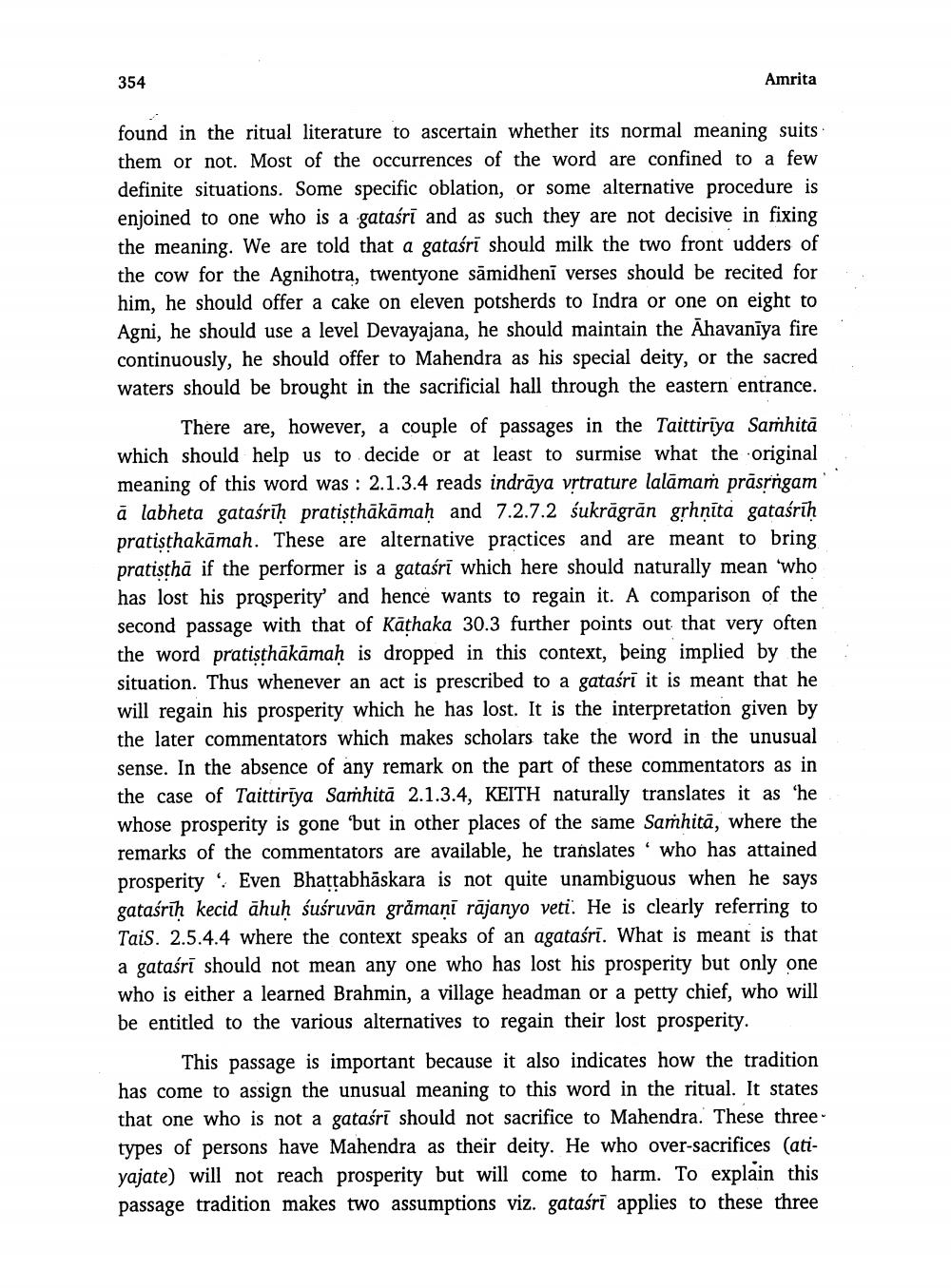________________
354
Amrita
Than
found in the ritual literature to ascertain whether its normal meaning suits them or not. Most of the occurrences of the word are confined to a few definite situations. Some specific oblation, or some alternative procedure is enjoined to one who is a gataśrī and as such they are not decisive in fixing the meaning. We are told that a gataśrī should milk the two front udders of the cow for the Agnihotra, twentyone sāmidhenī verses should be recited for him, he should offer a cake on eleven potsherds to Indra or one on eight to Agni, he should use a level Devayajana, he should maintain the Ahavanīya fire continuously, he should offer to Mahendra as his special deity, or the sacred waters should be brought in the sacrificial hall through the eastern entrance.
There are, however, a couple of passages in the Taittiriya Samhita which should help us to decide or at least to surmise what the original meaning of this word was : 2.1.3.4 reads indrāya vrtrature lalāmam prāsrngam à labheta gataśrīḥ pratisthākāmaḥ and 7.2.7.2 śukrāgran grhņīta gataśrīḥ pratisthakāmah. These are alternative practices and are meant to bring pratisthā if the performer is a gataśrī which here should naturally mean who has lost his prosperity and hence wants to regain it. A comparison of the second passage with that of Kathaka 30.3 further points out that very often the word pratisthākāmah is dropped in this context, being implied by the situation. Thus whenever an act is prescribed to a gataśrī it is meant that he will regain his prosperity which he has lost. It is the interpretation given by the later commentators which makes scholars take the word in the unusual sense. In the absence of any remark on the part of these commentators as in the case of Taittiriya Saṁhitā 2.1.3.4, KEITH naturally translates it as 'he whose prosperity is gone 'but in other places of the same Samhitā, where the remarks of the commentators are available, he translates who has attained prosperity : Even Bhattabhāskara is not quite unambiguous when he says gataśrīḥ kecid āhuḥ śuśruvān grămanī rājanyo veti. He is clearly referring to Tais. 2.5.4.4 where the context speaks of an agataśrī. What is meant is that a gataśrī should not mean any one who has lost his prosperity but only one who is either a learned Brahmin, a village headman or a petty chief, who will be entitled to the various alternatives to regain their lost prosperity.
This passage is important because it also indicates how the tradition has come to assign the unusual meaning to this word in the ritual. It states that one who is not a gatasri should not sacrifice to Mahendra. These three types of persons have Mahendra as their deity. He who over-sacrifices (atiyajate) will not reach prosperity but will come to harm. To explain this passage tradition makes two assumptions viz. gataśrī applies to these three




